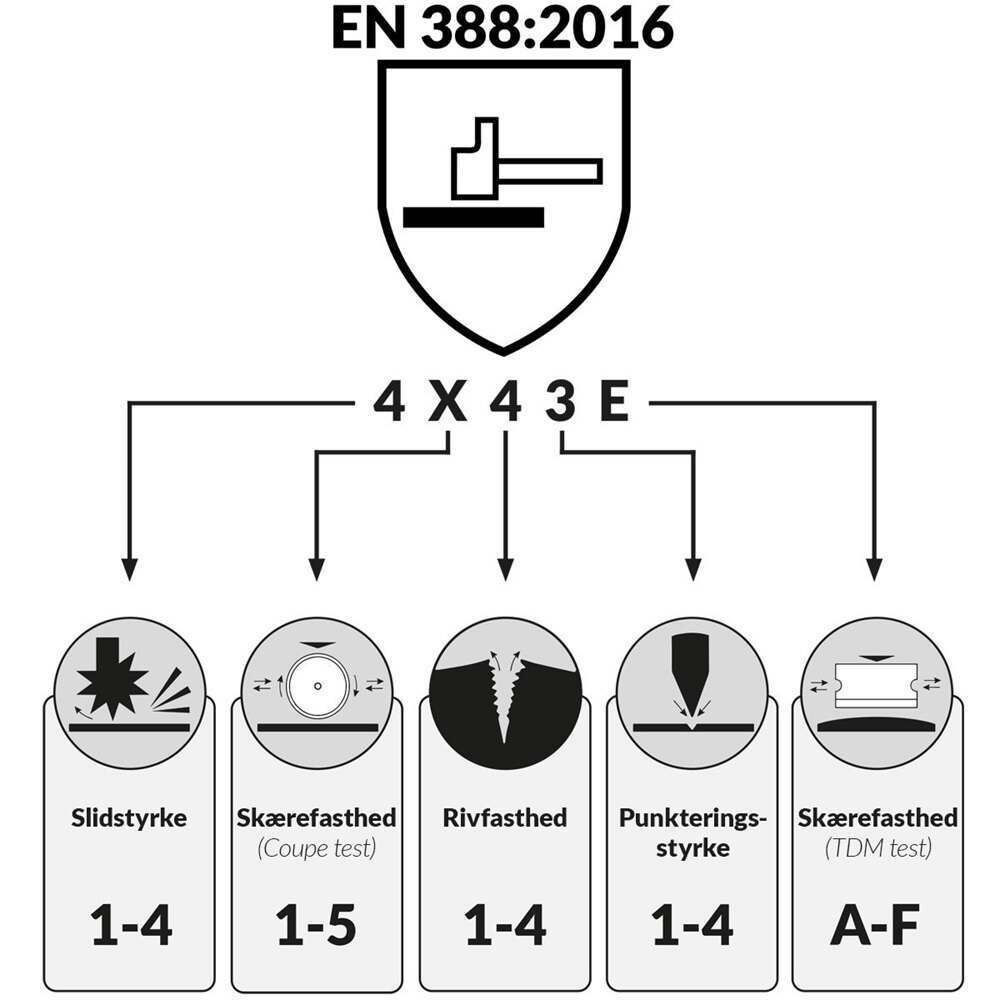EN 388 - Gloves providing protection from mechanical risks
When working with sharp objects or machines where there is a risk of cutting injuries, you should use cut resistance.
All OX-ON work gloves meet the requirements of EU standard EN388:2016 (protective gloves against mechanical risks). Gloves that have been tested and approved must be marked with the "hammer pictogram".
The glove test values (scores) which refer to the following five test points are shown below the pictogram:
- Durability
- Cut resistance (Coup test)
- Tear resistance
- Puncture resistance
- Cut resistance (TDM test)
Durability
For all types of work gloves, you must test the durability via rotating strokes from a sandpaper machine. Each rotation is counted and the test stops when there is a hole. The test result forms the basis for the score of the glove.
Watch a film about the durability test
Tear resistance
The tear resistance of a work glove is tested by tearing the material in both directions with a force of up to 75 Newtons. The test result forms the basis for the score that the glove gets.
Watch a film about the tear resistance
Puncture resistance
The puncture resistance of a work glove is tested by repeatedly pressing a standardized pointed object against the glove material. The more strength it takes to penetrate the material, the higher the glove score. However, a high score does not automatically mean that the glove can be used against needles and other pointed objects.
Watch a film about the Puncture resistance test
Cut resistance - New TDM test vs. old Coup test
EN388 was updated to EN388:2016 in 2016 with new requirements on how to test the "cut resistance" of gloves. A new TDM test (EN ISO 13997) was added to the EN388 standard - which is a more reliable test that reflects the reality to a much greater extent than in the past about how a cut occurs on a glove.
In the old test, called the Coup Test in EN388:2003, the numbers 1-5 indicate the glove's cut resistance, with the number 1 being the lowest factor and 5 highest factor.
In the new TDM test, the glove's cut resistance appears as letters from A-F, where A is the lowest factor and F is the highest factor.
| 0 | 1 | 2 | 3 | 4 | 5 | |
| WEAR AND TEAR - Rotations |
<100 | 100 | 500 | 2000 | 8000 | |
| CUT RESISTANCE (Coup test) - Index |
<1.2 | 1,2 | 2,5 | 5 | 10 | 20 |
| TEARING STRENGTH - Newton |
<10 | 10 | 25 | 50 | 75 | |
| PUNCTURES - Newton |
<20 | 20 | 60 | 100 | 150 | |
| CUT RESISTANCE (TDM test) - Newton |
A (>2) | B (≥5) | C (≥10) | D (≥15) | E (≥22) | F (≥30) |
| X = The manufacturer has chosen not to do the concrete test. | ||||||
The higher the individual number or letter is below the EN388 mark, the better the protection result is for the glove in the test.


